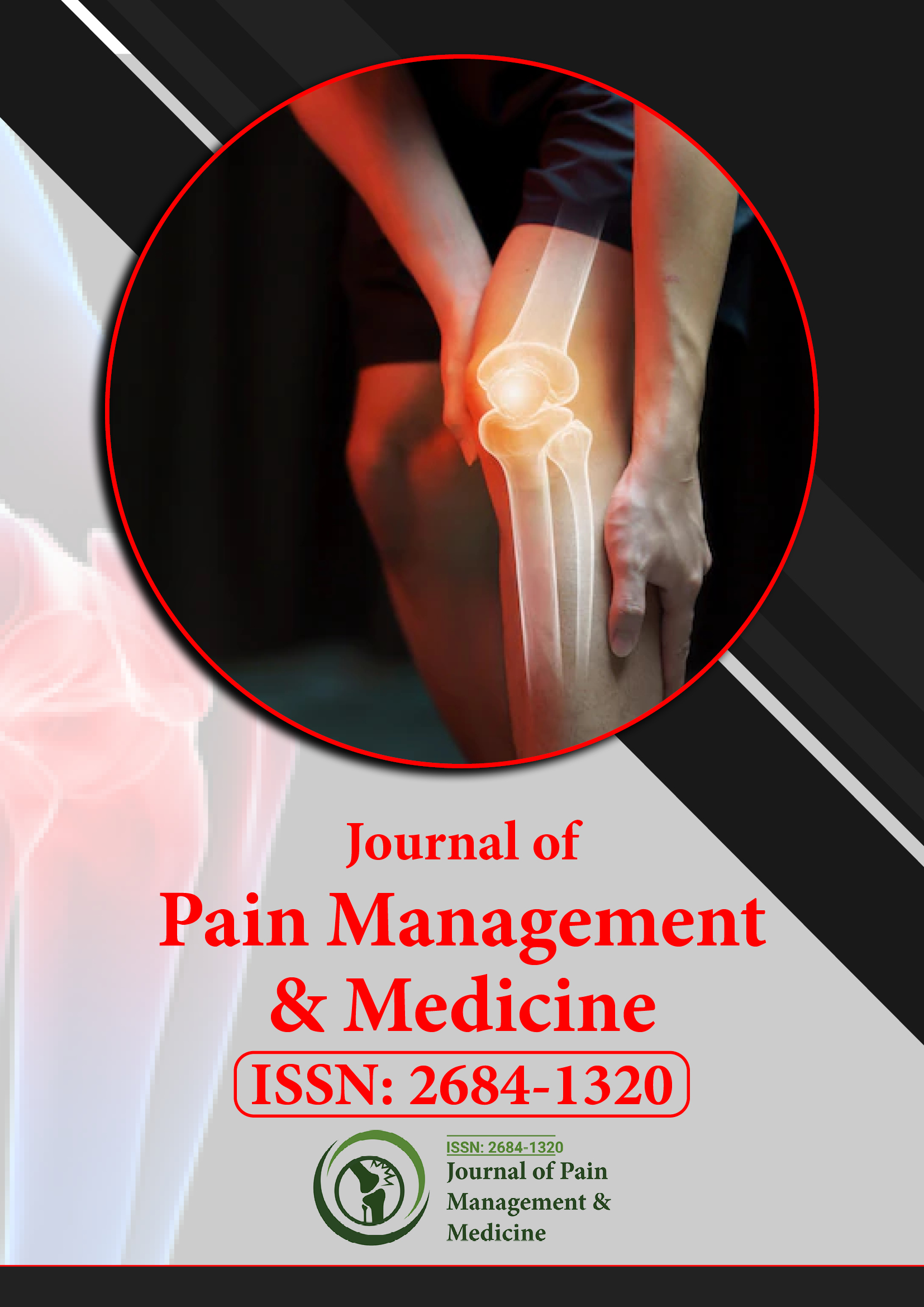Indexed In
- RefSeek
- Hamdard University
- EBSCO A-Z
- Publons
- Euro Pub
- Google Scholar
- Quality Open Access Market
Useful Links
Share This Page
Journal Flyer

Open Access Journals
- Agri and Aquaculture
- Biochemistry
- Bioinformatics & Systems Biology
- Business & Management
- Chemistry
- Clinical Sciences
- Engineering
- Food & Nutrition
- General Science
- Genetics & Molecular Biology
- Immunology & Microbiology
- Medical Sciences
- Neuroscience & Psychology
- Nursing & Health Care
- Pharmaceutical Sciences
Short Communication - (2025) Volume 11, Issue 2
Comparative Effectiveness of Mindfulness-Based Interventions Versus Traditional Cognitive Behavioral Therapy for Chronic Low Back Pain
Laura Martin*Received: 01-Mar-2025, Manuscript No. JPMME-25-28859; Editor assigned: 03-Mar-2025, Pre QC No. JPMME-25-28859 (PQ); Reviewed: 17-Mar-2025, QC No. JPMME-25-28859; Revised: 24-Mar-2025, Manuscript No. JPMME-25-28859 (R); Published: 31-Mar-2025, DOI: 10.35248/2684-1320.25.11.325
Keywords
Chronic Low Back Pain (CLBP); Mindfulness-Based Interventions (MBI); Cognitive Behavioral Therapy (CBT); Comparative effectiveness; Pain intensity; Functional disability
Introduction
Chronic low back pain (CLBP), defined as persistent pain lasting for three months or longer, is a leading cause of disability worldwide, imposing substantial personal and societal costs [1]. The multifactorial nature of CLBP often necessitates a multidisciplinary approach to management, integrating physical, psychological, and pharmacological interventions [2]. Psychological factors, including pain catastrophizing, fear-avoidance beliefs, anxiety, and depression, are known to significantly contribute to the experience and maintenance of CLBP [3]. Consequently, psychological interventions play a crucial role in CLBP management. Traditional cognitive behavioral therapy (CBT) is a well-established and evidence-based psychological approach that aims to identify and modify maladaptive thoughts and behaviors related to pain, improve coping skills, and promote functional restoration [4].
In recent years, mindfulness-based interventions (MBIs), such as Mindfulness-Based Stress Reduction (MBSR) and Mindfulness- Based Cognitive Therapy (MBCT), have emerged as promising approaches for managing chronic pain conditions, including CLBP [5]. MBIs emphasize present moment awareness, nonjudgmental acceptance of thoughts and feelings, and a shift in the individual's relationship with pain, rather than directly targeting pain intensity.
While both CBT and MBIs have demonstrated efficacy in reducing pain and improving function in individuals with CLBP in various clinical trials [6, 7], direct comparisons of their effectiveness in real-world clinical settings are less common. Understanding the comparative effectiveness of these two widely used psychological interventions can inform clinical decision-making and optimize treatment pathways for individuals with CLBP.
This short communication reports on a retrospective cohort study comparing the effectiveness of MBIs and traditional CBT in reducing pain intensity and improving functional disability in individuals with CLBP receiving treatment at a multidisciplinary pain management center.
Materials and Methods
A retrospective cohort analysis was conducted using data from patients with CLBP who received either an MBI program or traditional CBT at a multidisciplinary pain management center between January 2023 and December 2024. Inclusion criteria were: (1) diagnosis of non-specific CLBP lasting ≥ 3 months; (2) completion of either a standardized MBI program or a course of traditional CBT; and (3) availability of baseline, post-intervention, and 6-month follow-up data on pain intensity and functional disability. Patients with specific causes of low back pain (e.g., spinal stenosis, radiculopathy requiring surgery) or those who received other concurrent psychological interventions were excluded.
Outcome Measures
Pain Intensity: Measured using the Numeric Rating Scale (NRS), a 0–10 scale where 0 represents "no pain" and 10 represents "worst possible pain." Patients rated their average pain intensity over the past week.
Functional Disability: Assessed using the Oswestry Disability Index (ODI), a 10-item questionnaire that measures the impact of low back pain on various aspects of daily life. ODI scores range from 0% (no disability) to 100% (maximum disability).
Outcome measures were collected at baseline (prior to the start of the intervention), post-intervention (within one week of completing the program), and at 6-month follow-up (six months after the completion of the intervention).
Data Analysis
Descriptive statistics were used to summarize patient demographics and baseline characteristics. Independent samples t-tests or chi-square tests were used to compare baseline characteristics between the MBI and CBT groups. Within-group changes in pain intensity and functional disability over time were analyzed using paired samples t-tests. Between-group differences in outcome measures at post-intervention and 6- month follow-up were analyzed using independent samples t-tests, with baseline scores as covariates in an analysis of covariance (ANCOVA) to adjust for any baseline differences. Statistical significance was set at p < 0.05.
Results and Discussion
A total of 120 patients with CLBP met the inclusion criteria: 60 patients received MBI (35 MBSR, 25 MBCT) and 60 patients received traditional CBT. Baseline demographic and clinical characteristics of the two groups are presented in Table 1. There were no statistically significant differences between the MBI and CBT groups in terms of age, sex, duration of pain, baseline pain intensity, or baseline functional disability.
Both the MBI and CBT groups showed statistically significant reductions in pain intensity and functional disability from baseline to post-intervention and to 6-month follow-up (p < 0.001 for all within-group comparisons).
There were no statistically significant differences between the MBI and CBT groups in pain intensity or functional disability at post-intervention or at 6-month follow-up, after adjusting for baseline scores using ANCOVA.
This retrospective cohort study compared the effectiveness of mindfulness-based interventions and traditional cognitive behavioral therapy in individuals with CLBP treated in a real-world multidisciplinary pain management setting. Our findings indicate that both MBI and CBT resulted in significant and sustained improvements in both pain intensity and functional disability over the 6-month follow-up period. Importantly, there were no statistically significant differences in outcomes between the two intervention groups at any time point after adjusting for baseline scores.
These results suggest that both MBIs and traditional CBT are effective psychological interventions for managing CLBP. The comparable effectiveness observed in this real-world setting aligns with findings from some randomized controlled trials that have directly compared these two approaches [8, 9]. While CBT focuses on modifying maladaptive thoughts and behaviors, MBIs emphasize acceptance and non-judgmental awareness of pain and related experiences. Despite these different theoretical underpinnings and therapeutic techniques, both approaches appear to facilitate improved pain coping, reduced emotional distress, and enhanced functional capacity in individuals with CLBP.
The significant within-group improvements observed in both groups highlight the important role of psychological interventions in the multidisciplinary management of CLBP. By addressing psychological factors that contribute to the experience of chronic pain, both MBI and CBT can empower individuals to better manage their symptoms and improve their overall well-being.
The lack of significant differences between MBI and CBT suggests that the choice of intervention for an individual with CLBP may be guided by other factors, such as patient preference, individual needs, therapist expertise, and the specific goals of treatment. Some individuals may find the emphasis on present moment awareness and acceptance in MBIs more appealing, while others may prefer the more structured and problem-focused approach of CBT.
Limitations of this study include its retrospective design, which may introduce potential biases. The choice of intervention was not randomized, potentially leading to selection bias, although we attempted to mitigate this by adjusting for baseline differences in the statistical analysis. The specific types and durations of the MBI and CBT programs may have varied slightly within each group, reflecting real-world clinical practice. Future prospective, randomized controlled trials are needed to further clarify the comparative effectiveness of these interventions under more controlled conditions.
Conclusion
Both mindfulness-based interventions and traditional cognitive behavioral therapy are effective psychological interventions for reducing pain intensity and improving functional disability in individuals with chronic low back pain in a real-world clinical setting. There were no statistically significant differences in outcomes between the two approaches. These findings support the use of both MBIs and CBT as valuable components of multidisciplinary CLBP management, with the choice of intervention potentially tailored to individual patient preferences and clinical considerations.
References
- Hoy D, March L, Brooks P, Blyth F, Woolf A, Bain C, et al. The global burden of low back pain: Estimates from the Global Burden of Disease 2010 study. Ann Rheum Dis. 2014;73(6):968–974.
[Crossref] [Google Scholar] [PubMed]
- Chou R, Qaseem A, Snow V, Casey D, Cross TJ, Shekelle P, et al. Diagnosis and treatment of low back pain: A joint clinical practice guideline from the American College of Physicians and the American Pain Society. Ann Intern Med. 2007;147(7):478–491.
[Crossref] [Google Scholar] [PubMed]
- Vlaeyen JW, Linton SJ. Fear-avoidance model of chronic pain: 6 years on. Pain. 2012;153(6):1144–1147.
[Crossref] [Google Scholar] [PubMed]
- Williams AC, Eccleston C, Morley SJ. Psychological therapies for the management of chronic pain (excluding headache) in adults. Cochrane Database Syst Rev. 2012;(11):CD007407.
[Crossref] [Google Scholar] [PubMed]
- Reiner K, Tibi L, Hauser G. The efficacy of mindfulness-based interventions for chronic pain: A meta-analysis. Pain Med. 2013;14(10):1530–1542.
[Crossref] [Google Scholar] [PubMed]
- Cherkin DC, Sherman KJ, Balderson BH, Cook AJ, Anderson ML, Hawkes RJ, et al. Effect of mindfulness-based stress reduction vs cognitive behavioral therapy or usual care on back pain and functional limitations in adults with chronic low back pain: A randomized clinical trial. JAMA. 2016;315(12):1241–1249.
[Crossref] [Google Scholar] [PubMed]
- Hayden JA, Ellis J, Stewart A, Cartwright JL. Exercise therapy and cognitive behavioral therapy for patients with subacute low back pain: A systematic review and meta-analysis. Cochrane Database Syst Rev. 2018;(5):CD011286.
- Knight K, O’Hara AP, Williams AC. Mindfulness-based cognitive therapy for chronic pain: A systematic review and meta-analysis. Pain. 2014;155(11):2108–2117.
[Crossref] [Google Scholar] [PubMed]
- Morone NE, Greco CM, Cheng Y, Moore CG, Rollman BL, Weiner DK. Mindfulness meditation for the treatment of chronic low back pain in older adults: A randomized controlled trial. Pain. 2016;157(11):2385–2391.
[Crossref] [Google Scholar] [PubMed].
Citation: Martins L (2025) Mindfulness-Based Interventions Versus Traditional Cognitive Behavioral Therapy for Chronic Low Back Pain. J Pain Manage Med. 11.325.
Copyright: © 2025 Martins L. This is an open access article distributed under the terms of the Creative Commons Attribution License, which permits unrestricted use, distribution, and reproduction in any medium, provided the original author and source are credited.

